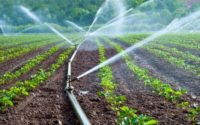Can Regenerative Farming Replace Traditional Farming?
According to the Environmental Protection Agency (EPA), traditional agriculture practices involving the use of synthetic fertilizers, monocultures, and chemical treatments, contribute to around one-quarter of global greenhouse gas emissions. Prioritizing food production to fulfill its growing demands has taxed soil over the years and left farms less diverse, less healthy, and less resilient. Constant soil destruction and loss of indigenous seeds with chemical pollution, erosion, desertification, etc., can lead to a qualitatively degraded food supply chain characterized by diminished nutrition.
Why Regenerative Farming is Need of the Hour?
Without protecting and regenerating the arable soil, it will be impossible to feed the world within the next 50 years. The danger of losing topsoil cannot be underestimated as our lives depend on the health of natural ecosystems. The emerging soil crisis had led to a great need to find alternative farming methods that do not degrade land, rather improve it to produce high quality and nutrient-dense food. While organic farming is a suitable option for minimizing environmental damage and reducing carbon footprint, the alternate agriculture practice cannot rebuild or regenerate the soil. However, regenerative farming can help address the mortal threat to our future survival. The techniques involved in this kind of agriculture can help rebuild soil health and promote plant health, nutrition, and farm productivity.
Nature has an incredible capacity to renew itself. The core philosophy of regenerative farming is to develop healthy and robust soil with minimal or zero tilling techniques, smart crop rotation, and abstaining from the use of fertilizers and pesticides. Minimized disruption to the soil cause microorganisms to thrive and keep the plant roots connected to unique communities. Cover cropping allows for water and carbon to be absorbed by the soil, further eliminating soil erosion and preventing desertification. Cover cropping 85% of annually planted US cropland could sequester around 100 million tons of CO2. Reduction or elimination of synthetic chemicals discourages plants from seeking nutrients from deeper soil layers and working with microbes to assimilate nutrients.
Another purpose of regenerative agriculture is to restore the carbon content in the soil, which will further improve its water drainage ability that could replenish the underground water levels. This means improved resilience against draughts as well as increased protection against floods during heavy rainfall, which tend to ruin crops and contribute to soil erosion. Practitioners of regenerative farming also adapt cover cropping where farmers raise plants not to sell or eat them but improve the health of the soil where agriculture takes place. With this ancient method, crops can grow on healthier soil.

Soil As a Carbon Sink
About a quarter of the world’s greenhouse gas emissions come from land use and agriculture combined. However, the right kind of farming practices can help sequester atmospheric carbon in agricultural soils, which can help reverse the effects of climate change. Through photosynthesis, plants pull carbon out of the atmosphere and deposit it in the ground underneath, which results in healthy plants. However, conventional agricultural practices tend to have opposite effects on the soil as synthetic fertilizers and chemical pesticides degrade the soil and release carbon into the atmosphere. As per estimates, if all the world’s agricultural land sequestered around 0.5 tons of carbon per hectare annually, it could store around 2.5 gigatons of carbon every year. This could offset around 20% of global greenhouse gas emissions annually. Besides, planting trees among row crops on 10% of US croplands could sequester up to 82 MMT CO2e/year.
The ability of the soil to sequester carbon depends on multiple factors, such as the practices involved in regenerative farming and the topography of the land. Advanced remote imaging technologies allow farmers to measure the amount of carbon in their soils. Until now, the expense and time associated with measuring soil organic carbon content used to be a major limitation for farmers hoping to capitalize on the growing demand for carbon offsets.
How Can Regenerative Agriculture Help Farmers?
According to a study, it has been found that farms with regenerative practices were 78% more profitable than conventional plots, mainly due to factors like low input costs and growing end market. Practices involved in regenerative farming require fewer external inputs in the form of seeds and fertilizers, which saves almost a third of farmers’ gross income that used to go into conventional farming practices. Increasing the diversity of insects with no use of pesticides can lead to stronger crops and more income for farmers.
With the growing demand for “organic” farm produces with no use of fertilizers or pesticides, farmers receive higher premiums for crops. Using the farm to grow more than just one crop with inter-cropping can help farmers generate a diversified income stream. Over time, regenerative agriculture can increase the profitability of farmland and increase the value of investors’ farmland assets. Besides, the farming method can also present opportunities beyond ownership, such as infrastructure investments, etc.
Brands Leading the Way in Regenerative Farming

Many companies are turning to carbon offsetting to reduce their carbon footprint, revamping agricultural and supply chain systems.
· Alter Eco
A sustainable chocolate-centric food company Alter Eco is mitigating climate change with the adoption of regenerative agriculture practices. The chocolate company is making huge investments for making a transition to regenerative farming in the cacao-growing regions of Central and South America. With conventional agricultural practices, the quality of the coffee will no longer be suitable in the coming decades. Alter Eco provides funding, educational tools, and training to help farmers pursue agroforestry, which can help address soil health and reduce greenhouse gas emissions. Till now, about 400 of 1800 Ecuador farmers have made the transition to regenerative farming. The regenerative farmed cacao could increase carbon sequestration by 85 metric tons of CO2 over the next two decades. If regenerative agriculture extends across the cacao industry, around 2.5 gigatons of CO2 could be sequestered, which would be equivalent to removing 30 million vehicles off the road.
· Nestle
Nestle has planned to intensify its efforts towards climate crisis by accelerating the transition to a regenerative food system. To reduce its carbon emissions by half by 2050, Nestle will be working with its food system partners, including 500,000 farmers and 150,000 suppliers, to advance regenerative and support farming practices aimed towards soil conversation, regeneration of water cycles, and biodiversity enhancement. The food and beverage brand is leveraging its vast network of R&D experts and agronomists to provide technical assistance to farmers and apply state-of-the-art technology to develop high-yield coffee and cocoa varieties with low environmental impact. Besides, the company supports farmers financially by co-investing with them, facilitating lending, and working with partners to test and learn the best regenerative agriculture.
· General Mills
One of the most significant achievements of the world’s fourth-largest producer of organic and natural foods General Mills in 2020 was the company’s ability to reach its objective of 100% sustainably sourcing its top ten priority ingredients such as wheat, oats, cocoa, corn, dairy, fiber packaging, sugar beets, sugarcane, palm oil, and vanilla. General Mills has enrolled 70,000 acres of land in the company’s regenerative agriculture pilot and has committed to expanding the practice to 1 million acres by 2030.
· PepsiCo
PepsiCo has partnered with global farming organization LEAF (Linking Environment and Farming) to assist its Quaker Oats farmers in adopting regenerative agricultural practices. The aim is to take a rigorous approach towards delivering more sustainable farming to improve the health of the soil. The company has planned to expand its regenerative farming practices to 7 million acres of cultivated land. The push towards regenerative agriculture by the company could eliminate at least 3 million tons of greenhouse gas emissions by the end of the decade..
· Unilever
Unilever, a global brand used by 2.5 billion people worldwide, is expected to introduce a new set of guidelines to their existing code called “Unilever’s Regenerative Agriculture Principles” that have positive impacts on soil health, water and air quality, carbon capture, and biodiversity. The principles also aim towards enabling local communities to improve their environment by optimizing the use of renewable resources and producing crops with sufficient yield to meet existing and future needs. Besides, the company has set the target of achieving a deforestation-free supply chain by 2023, enhancing traceability and transparency through advanced digital technologies.
Conclusion
Regenerative agriculture is becoming the higher standard for consumers seeking food labeled as “organic” to protect their health and the planet. Although regenerative farming has been around for centuries as indigenous communities managed to protect soil and the local ecosystem, the farming strategy has gained fresh attention due to the sudden spike in demand for “organic” food items. In 2020, the sales value of organic produce topped USD2.2 billion as shoppers sought to avoid the foods produced with chemical fertilizers and pesticides. Regenerative agriculture will look different from farm to farm, but it has a high potential to change our environment and improve the climate.



